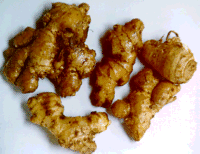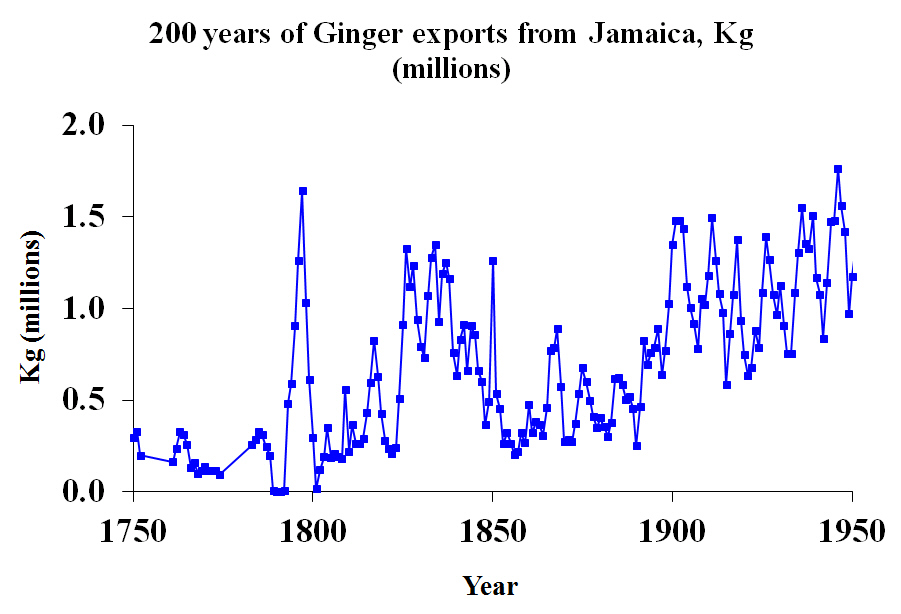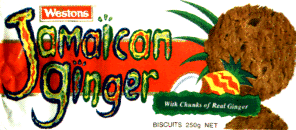
Ginger (Zingiber officinale Rosc.) is thought to have been introduced into Jamaica about 1525. By 1547 though, it is reported that the export of ginger amounted to over 22,000 quintals (1.2 million Kg).

Prior to 1740, the ginger was associated with the Parish of St Ann, where it had first been planted by the Spanish. After that the Christiana region took over when it was recognised that the soil and climatic conditions were especially suitable for the growing of ginger. In 1980, a survey by the International Trade Centre reported that 1,100 acres of ginger were planted in Jamaica in the central range areas of Clarendon, Manchester and Trelawny.

Between the 1930's and 1960's, Jamaica was listed as one of the three largest producers of ginger in the world, along with India and Sierra Leone. A 10-mile radius around Christiana was identified as the region which grew the finest ginger in the world. Since then the production has fallen significantly, from close to 2 million kilogram of ginger in 1953 to around 0.4 million kilos in 1995.
For 2014 ginger output is expected to nearly double last years production, assuming the 320 hectares (790 acres) yields 3 million kilogram. That's more than five times the 0.460 million kg produced in 2009. Jamaica's ginger production fell to an all-time low in the early 1990s, having been impacted by the rhizome rot and bacterial wilt diseases, that effectively rendered the country as a net importer of the product. For 2013, Jamaica exported slightly more than it imported.
The chief constraint for production seems to be associated with peeling, as this is time consuming and costly. An average worker can peel about 11 Kg of green ginger per day, which amounts to less than three (3) Kg of dried ginger. Another problem is that it is difficult to recruit new young staff. They are generally unwilling to take part in the peeling, which is usually left to older family members. Preparation involves removing the soil, then peeling the outer skin and spreading on mats in the sun for about 10 days in the sun, to reduce the moisture content to 10-12%
The 2008 country production figures from the FAO web site include Jamaica. These are shown in the Table below:
| Rank | Country | Production (tonnes) |
|---|---|---|
| 1 | India | 382600 |
| 2 | China | 328810 |
| 3 | Indonesia | 192341 |
| 4 | Nepal | 176602 |
| 5 | Thailand | 161505 |
| 6 | Nigeria | 140000 |
| 7 | Bangladesh | 77046 |
| 8 | Japan | 49800 |
| 9 | Philippines | 27538 |
| 10 | Cameroon | 11000 |
| 11 | Malaysia | 10340 |
| 12 | Sri Lanka | 10050 |
| 13 | Bhutan | 9870 |
| 14 | Ethiopia | 9000 |
| 15 | Côte d'Ivoire | 8200 |
| 16 | Republic of Korea | 3560 |
| 17 | Fiji | 2448 |
| 18 | Costa Rica | 955 |
| 19 | United States of America | 816 |
| 20 | Mauritius | 709 |
| 21 | Dominican Republic | 551 |
| 22 | Guyana | 520 |
| 23 | Jamaica | 298 |
| 24 | Kenya | 150 |
| 25 | Dominica | 120 |
| 26 | Uganda | 120 |
| 27 | Réunion | 96 |
| 28 | Pakistan | 95 |
| 29 | Trinidad and Tobago | 95 |
| 30 | Puerto Rico | 90 |
| 31 | Ghana | 70 |
| 32 | Madagascar | 30 |
| 33 | United Republic of Tanzania | 10 |
| 34 | Saint Lucia | 9 |
Jamaica can be seen to have dropped to a ranking of number 23 despite its reputation for flavour.
 Biscuit wrapper from Australia
Biscuit wrapper from Australia
- the volatile oils, a mixture of terpenoids which imparts the
characteristic aroma and modifies the taste.
- the non-volatile pungent principles, such as the
gingerols,
shogaols,
paradols and zingerone which produce the "hot" sensation in
the mouth.
The extractives (oil and oleoresin) are obtained from the dried rhizomes. About 2-3% of ginger oil is obtained on steam distillation and the main constituents include:
| Sample Origin | 6-gingerol | 8-gingerol | 10-gingerol | 6-shogaol | Total Gingerols |
|---|---|---|---|---|---|
| Clarendon-1 | 12.25 | 2.70 | 4.34 | 1.48 | 19.29 |
| Clarendon-2 | 11.98 | 2.35 | 3.44 | 1.38 | 17.77 |
| St Thomas-1 | 16.07 | 5.02 | 4.20 | 3.21 | 25.29 |
| St Thomas-2 | 10.77 | 2.11 | 2.16 | 0.94 | 15.04 |
| St Thomas-3 | 12.72 | 2.52 | 3.78 | 1.50 | 19.02 |
| St Thomas-4 | 13.96 | 3.66 | 3.91 | 1.28 | 21.53 |
| St Ann-1 | 12.71 | 2.63 | 4.00 | 1.40 | 19.34 |
| Minimum | 10.77 | 2.11 | 2.16 | 0.94 | 15.04 |
| Maximum | 16.07 | 5.02 | 4.34 | 3.21 | 25.29 |
| Average | 12.92 | 3.00 | 3.69 | 1.60 | 19.61 |
 Return to Chemistry, UWI-Mona,
Home Page
Return to Chemistry, UWI-Mona,
Home Page
Copyright © 1995-2014 by Robert John Lancashire, all rights reserved.
Created and maintained by Prof. Robert J. Lancashire,